
ALTERNATIVE TO CELOTEX*
With a rich history spanning 97 years, Celotex company has been a prominent player in the insulation industry. Initially importing fibreboard insulation, the company later introduced innovative PIR(PolyIsocyanuRate) products. The demand for high insulation levels, driven by stricter building regulations since 2002, has propelled PIR to the forefront. Despite its success, competition in the market remains fierce. In this blog series, we explore alternative insulation options to help you make informed choices for your projects.
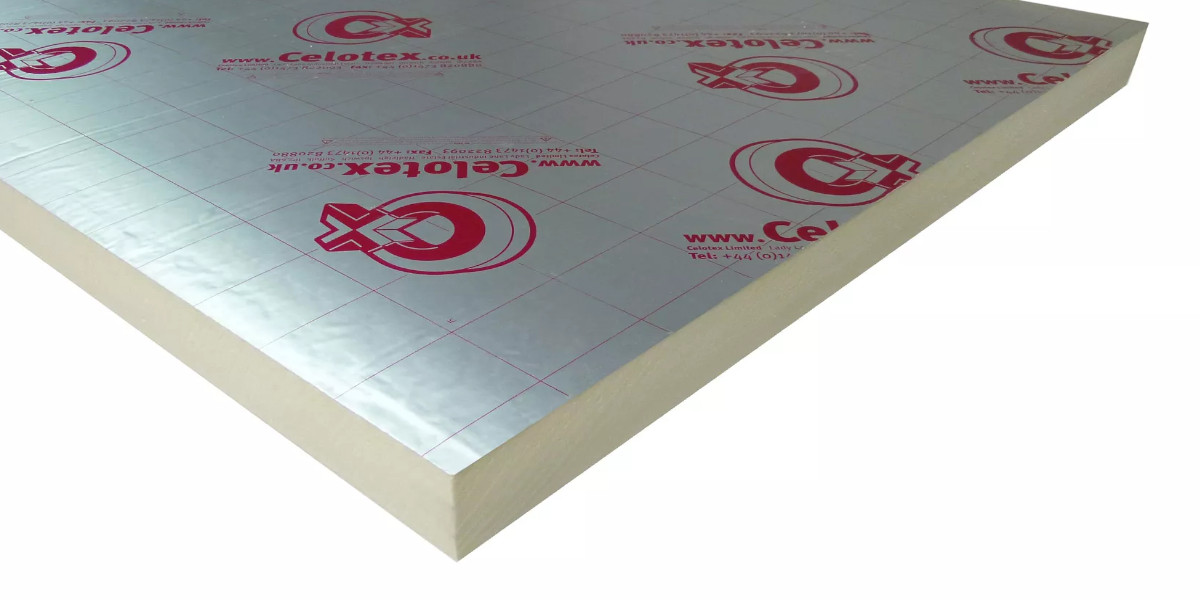
 Table of contents:
Table of contents:
ALTERNATIVE TO CELOTEX
WHEN WE START TO LOOK FOR ALTERNATIVE INSULATION PRODUCTS?
IS THERE AN ALTERNATIVE TO CELOTEX?
IS KINGSPAN BETTER THAN CELOTEX?
WHAT IS BETTER ROCKWOOL OR CELOTEX?
IS XTRATHERM AS GOOD AS CELOTEX?
CELOTEX PIR ALTERNATIVES
CHEAPER ALTERNATIVE TO CELOTEX
BEST ALTERNATIVE TO CELOTEX / KINGSPAN OR CELOTEX
NATURAL ALTERNATIVE TO CELOTEX
CELOTEX vs ROCKWOOL U-VALUES / 100MM CELOTEX EQUIVALENT ROCKWOOL
ECOTHERM VS CELOTEX
CONCLUSION
WHEN WE START TO LOOK FOR ALTERNATIVE INSULATION PRODUCTS?
There are several reasons why people search for alternative products:
Cost
Alternative products may offer similar performance at a lower cost, making them more budget-friendly options for individuals or businesses.
Specific requirements
Different projects or applications may have specific needs that cannot be fully met by a single brand or product. Exploring alternatives allows for customization and finding the best fit.
Availability
Some products may have limited availability. Exploring alternatives ensures that you have options even if the preferred product is not readily accessible.
Performance or features
Alternative products may offer unique features, improved performance, or specific benefits that are not provided by the original product. This can be particularly relevant for niche or specialised applications.
Competitive comparison
Comparing alternative products helps in assessing their strengths and weaknesses, allowing for a more informed decision-making process.
By seeking alternative products, individuals and businesses can find solutions that align better with their needs, budget, availability, and desired performance, ultimately improving overall satisfaction and outcomes.
IS THERE AN ALTERNATIVE TO CELOTEX?
When it comes to Celotex's PIR insulation boards, there are indeed alternative products available from different brands. These include Unilin (also known as Xtratherm), Recticel, Iko-enertherm, Ecotherm, and Kingspan. All of them share the same thermal conductivity of 0.022 W/mK and have aluminium foil faces on both sides. However, Unilin offers a higher compressive strength of 150kPa, while Celotex PIR has a compressive strength of 120kPa. While a difference of 30kPa may not significantly impact wall insulation, it provides additional hardness for floor insulation to withstand heavier loads.
FIRE REACTION
As for fire resistance, an alternative to Celotex's PIR boards is extruded (XPS) or expanded polystyrene (EPS) insulation. These insulation products closely reflect the properties of Celotex boards. Both Celotex and EPS/XPS boards fall into the same fire classification group - E.
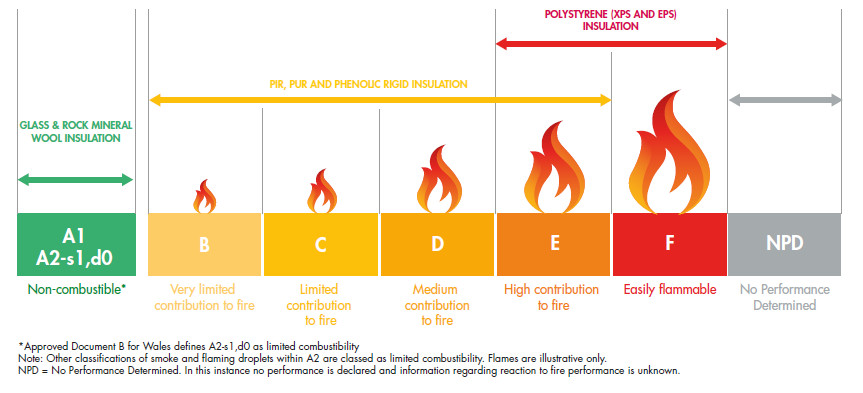
WATER VAPOUR RESISTIVITY
Unfortunately, polystyrene (EPS) boards fall behind Celotex's PIR insulation boards in terms of Water Vapour Resistivity. EPS boards typically offer a Water Vapour Resistivity of approximately 20 MNs/gm, whereas PIR boards provide a significantly higher value of 100 MNs/gm. This means that PIR boards have nearly 5 times the Water Vapour Resistivity compared to EPS boards.
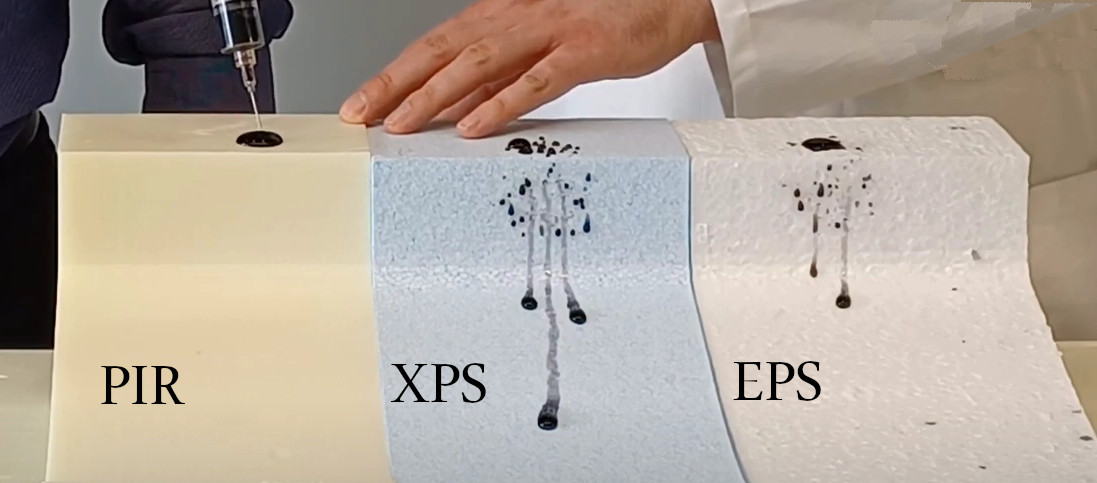
Picture credit:https://www.youtube.com/watch?v=FRsmRupkyx8
THERMAL CONDUCTIVITY
When it comes to thermal conductivity, Celotex's PIR boards have only one competitor offering a lower (better) thermal conductivity of approximately 0.019 W/mK. These are the phenolic insulation products made by Kingspan. However, they are generally more expensive than Celotex, which is why they are less commonly used as alternative products to Celotex.
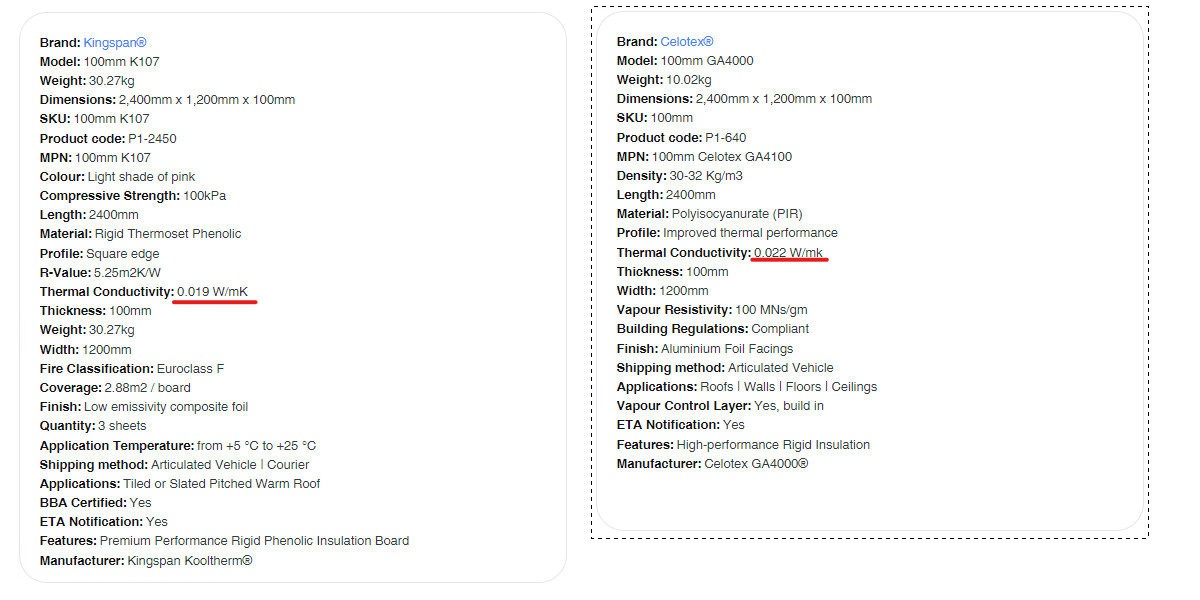
ACOUSTIC
When it comes to acoustic properties, it is commonly said that EPS (expanded polystyrene) boards are an alternative to Celotex's PIR boards. PIR boards themselves do not provide strong sound insulation. Their foam core typically has a density of 30-32 kg/m3, which is the product's density that sound must overcome. In general, whether using PIR or EPS boards, it is said that they can reduce sound levels by approximately 23dB. This is not significant considering that human conversation typically ranges around 35-40dB.
IS KINGSPAN BETTER THAN CELOTEX?
Choosing between Kingspan and Celotex insulation products involves considering several factors. While both companies offer high-performance insulation options, there are differences in their specific offerings. Kingspan is renowned for their phenolic insulation boards, known for their low thermal conductivity (0.019 W/mK) and fire-resistant properties. Celotex, on the other hand, provides PIR insulation boards with similar properties (thermal conductivity of 0.022 W/mK).
In terms of thermal conductivity, Kingspan's phenolic boards outperform Celotex's PIR boards by approximately 18%. However, the decision of whether to choose Kingspan or Celotex goes beyond thermal performance. Factors such as cost, fire resistance, environmental impact, and availability should also be taken into account.
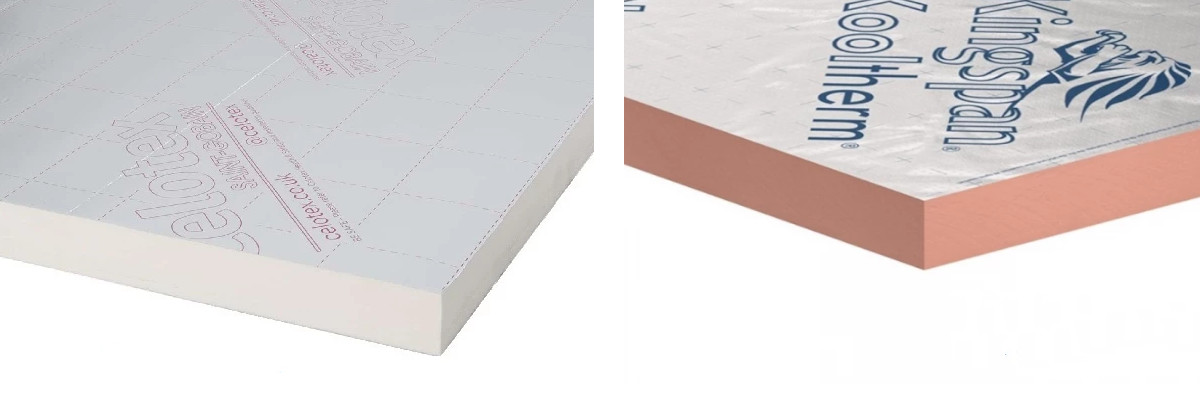
Kingspan phenolic board vs Celotex PIR board
Both Kingspan and Celotex offer a diverse range of insulation products for various applications, including walls, roofs, floors, and pipes. Kingspan's product range includes Kooltherm, Therma, and Optim-R, while Celotex offers TB4000, GA4000, and XR4000. These options come in different thicknesses to meet the specific requirements of different construction projects.
When it comes to installation, both Kingspan and Celotex products are designed for ease of use. Kingspan boards are lightweight and easy to handle, facilitating quick and straightforward installation. Similarly, Celotex products are designed to be easily cut and fitted, with various fixing options available for different applications.
In terms of price, Celotex insulation products generally tend to be slightly more affordable than Kingspan. For instance, a 50mm thick Celotex GA4000 insulation board can cost around £14-£15 per square metre, whereas a 50mm thick Kingspan Kooltherm TP10 insulation board may cost around £17-£18 per square metre.
Both Kingspan and Celotex provide high-quality insulation products designed to deliver efficient thermal performance and energy efficiency. While Kingspan products are typically pricier, they offer superior thermal performance and a wider range of options.
WHAT IS BETTER ROCKWOOL OR CELOTEX?
When comparing Rockwool insulation material to PIR (Polyisocyanurate) boards like Celotex, based on data sheets from both manufacturers, it can be concluded that Rockwool is the clear winner in terms of acoustics. The density of Rockwool mineral wool is nearly 2-3 times greater, ranging from 60 to 100 kg/m3, whereas the density of PIR boards is 30 kg/m3. This substantial difference in density is sufficient evidence to claim that Rockwool is a better alternative to PIR boards in terms of acoustic performance.
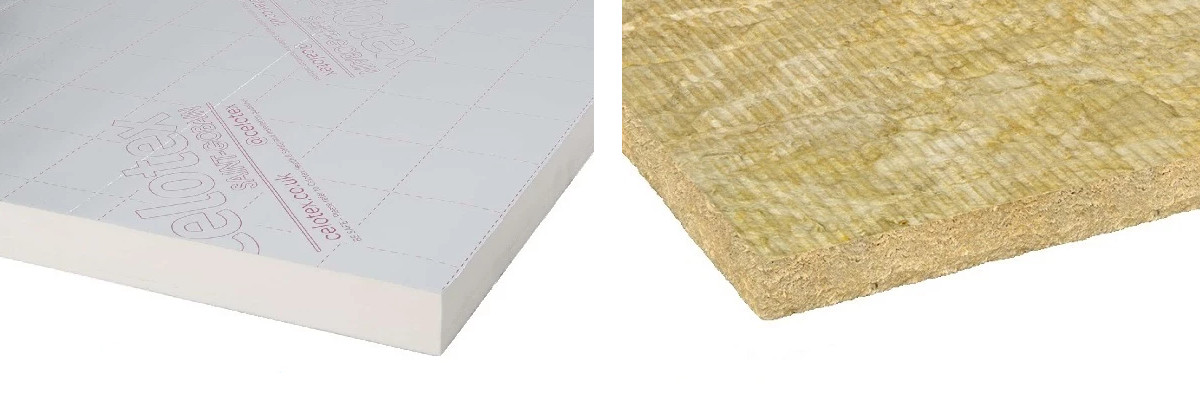
Celotex PIR board vs Rockwool RW5
Another aspect in which Rockwool outperforms PIR boards from companies like Celotex, Unilin or Recticel, is its fire resistance. Rockwool mineral wool is classified as non-combustible and falls under the highest and best possible fire rating, A1. In terms of safety, Rockwool and its products receive the highest ratings and surpass PIR boards in terms of fire resistance.
However, it is worth noting that Rockwool is less resistant to water absorption compared to PIR boards from companies like Celotex, Unilin, or Recicel. Rockwool is a product based on natural materials, and if it becomes wet, it requires a longer drying period or sometimes even replacement. This is not a concern with PIR boards, which do not have the same water absorption issue.
Overall, when considering factors such as acoustic performance, fire resistance, and water absorption, Rockwool proves to be a superior alternative to PIR boards. However, it is essential to evaluate specific project requirements and consult with professionals to determine the most suitable insulation material for a given application.
IS XTRATHERM AS GOOD AS CELOTEX?
Both Xtratherm (Unilin) and Celotex use the same ingredients to manufacture their products, although their production technologies may vary in some aspects. However, considering the overall versatility of applications for products from both manufacturers, it can be stated that Xtratherm and Celotex are equally good. It is important to note that Celotex has a remarkable 97 years of experience in the market, whereas Xtratherm has 20 years of experience.This being said Celotex has a little more to offer in terms of history. For sure everyone has heard of the Celotex company.
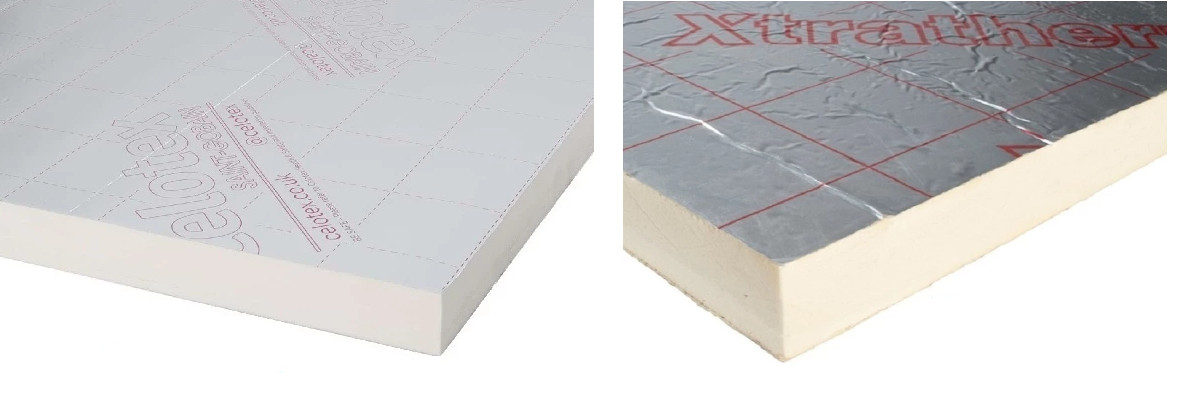
Celotex vs Xtratherm
If you want to delve into more detailed differences between these two companies, you can click on the article "12mm Celotex TB4012 vs 15mm Xtratherm Thin-r."
Both Xtratherm and Celotex boards are faced on each side by a metal foil, both offer the same size 2400mmx1200mm, same thermal conductivity of 0.022 W/mk and the same vapour resistivity of 100 MNs/gm. Both PIR boards have been assessed by the BBA (British Board of Agrément) for its defined applications and compliance with the relevant Building Regulations.
CELOTEX PIR ALTERNATIVES
CHEAPER ALTERNATIVE TO CELOTEX
For those seeking a more budget-friendly substitute/alternative for Celotex PIR insulation board, both expanded polystyrene (EPS) and extruded polystyrene (XPS) present themselves as worthy alternatives.
It is important to note that neither expanded polystyrene (EPS) nor extruded polystyrene (XPS) have aluminium foil on both sides, and their dimensions are significantly smaller, typically 1000x500mm. Therefore, when using EPS as an alternative to Celotex, more panel joints will be required for installation
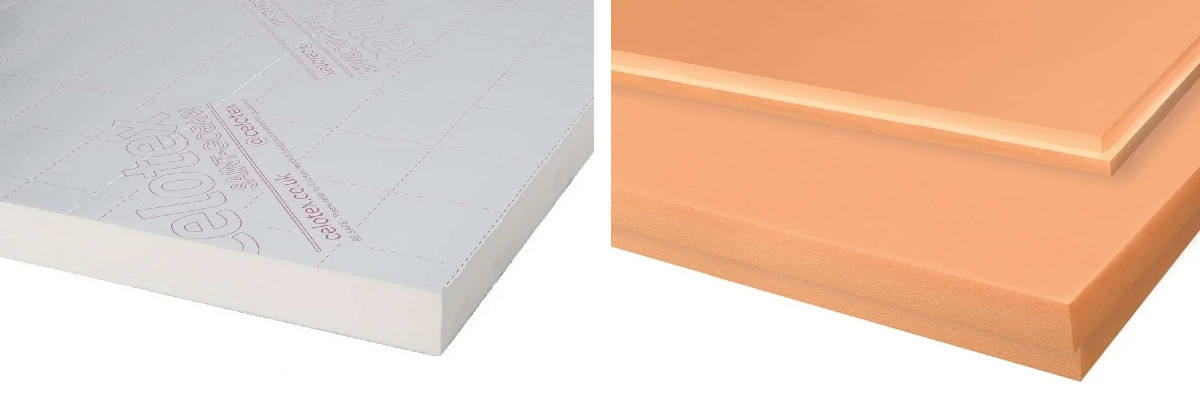
Celotex vs Extruded polystyrene(XPS)
BEST ALTERNATIVE TO CELOTEX / KINGSPAN OR CELOTEX
If price is not the primary factor, phenolic products from Kingspan offer a comparable alternative to Celotex PIR boards, providing better performance at a competitive price (not cheaper). Their thermal conductivity is 0.019W/mK, which is approximately 0.004 lower than Celotex boards (0.022W/mK), resulting in an improvement of around 11%. Kingspan phenolic boards are currently regarded as the top-performing insulation materials on the market for home insulation.
NATURAL ALTERNATIVE TO CELOTEX
If you are looking for an alternative product to Celotex boards made from natural raw materials such as rock or lava, Rockwool products will be the best choice. They are completely non-combustible, provide a much better sound barrier, and most importantly, do not contain any substances other than the natural ones from which they are produced.
CELOTEX vs ROCKWOOL U-VALUES / 100MM CELOTEX EQUIVALENT ROCKWOOL
The unit of the U-value is W/m²K (watts per square metre and per Kelvin), which indicates the heat flow through an area of one square metre with a temperature difference of one Kelvin (= 1°C). A higher U-value indicates a worse insulation effect, while a lower U-value indicates a better insulation effect.
The best example for comparing the U-values of Rockwool and Celotex PIR boards is to use the formula for U-value:
U-value = 1/R
Let's consider the commonly used thickness of 100mm for both boards.
Celotex PIR 100mm - R-Value 4.50m2K/W
U value:
U = 0.22W/(m²K)
Rockwool RW3 100mm - R-Value 2.90m2K/W
U value:
U = 0.34W/(m²K)
When comparing the U-values, it is evident that Celotex PIR boards outperform Rockwool boards, providing a significantly higher (lower U-value) insulation efficiency of approximately 35%.
ECOTHERM VS CELOTEX
Both Ecotherm and Celotex brands produce similar products, both having aluminium foil on both sides. They are used for insulating walls, floors, and ceilings. Depending on the supplier, Ecotherm is often slightly cheaper than Celotex, but this doesn't necessarily mean it's a lower-quality product. In fact, Ecotherm has a higher compressive strength of 140kPa compared to Celotex's 120kPa. This makes it a harder and more resistant insulation material capable of withstanding higher loads.
To put this into perspective, the compressive strength of 20kPa is similar to the weight exerted by a small car tire on a surface. This means that the insulation board with a compressive strength of 20 kPa can withstand a load equivalent to the pressure exerted by a small car tire.
CONCLUSION
In conclusion, when seeking alternatives to Celotex PIR boards, it is crucial to consider factors such as thermal conductivity, acoustic properties, fire resistance, water vapour resistivity, and cost. Rockwool, Kingspan, and EPS (Expanded Polystyrene) and XPS (Extruded Polystyrene) polystyrene are excellent options to explore. Rockwool stands out for its superior acoustic performance and fire resistance, while Kingspan offers best thermal conductivity. EPS and XPS polystyrene provide cheaper alternatives with their own unique properties. Ultimately, the choice of alternative will depend on specific project requirements and budget considerations.
Related articles:
HOW TO CUT A PIR INSULATION BOARD?
STEP-BY-STEP GUIDE: HOW TO INSTALL CELOTEX BOARD BETWEEN FLOOR JOISTS
FOIL INSULATION: TO GAP OR NOT TO GAP? THAT IS THE QUESTION!
CHEAPER ALTERNATIVE/EQUIVALENT TO KINGSPAN INSULATION
INSULATION COST COMPARISON: EPS vs PIR vs MINERAL WOOL
ROCKWOOL INSULATION: IS IT SAFE FOR YOU AND YOUR HOME?
PIR vs POLYSTYRENE INSULATION: WHICH IS BETTER?
HOW TO PROPERLY INSTALL INSULATION BETWEEN RAFTERS: A STEP-BY-STEP GUIDE
*All the information provided in the content published on Insulationgo blog is for informational and educational purposes only. Insulationgo LTD makes every effort to ensure the accuracy and timeliness of the content, but we do not assume any responsibility for any errors or omissions.
The information presented on this blog should not be considered as professional advice or a substitute for consulting relevant experts. Before making any purchase decisions or taking action based on the information presented here, it is strongly recommended to contact the product manufacturer directly to verify the details and ensure its suitability for your specific needs.
By using this blog, you acknowledge and agree that Insulationgo LTD shall not be held liable for any damages, losses, or inconveniences arising from the use or reliance on the information provided herein. This limitation of liability applies to all users of the blog, including but not limited to visitors, readers, and subscribers.










































































































